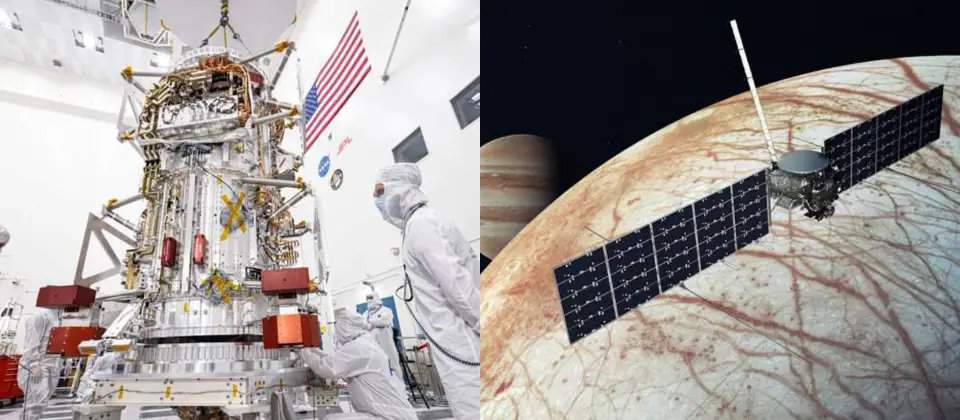NASA and the U.S. Department of Energy are funding the Lunar Surface Electromagnetic Experiment-Night Mission (LuSEE-Night), which is a small radio telescope designed to spot radio waves coming from the cosmic Dark Ages that existed over 13.4 billion years ago. These agencies are working on this futuristic project in collaboration with scientists at the Lawrence Berkeley National Laboratory, the Brookhaven National Laboratory, the University of California, Berkeley, and the University of Minnesota.
If the outcome of the experiment goes as planned, it will be launched to the far side of the moon in 2025. LuSEE-Night will commence its journey to the moon as part of NASA’s Commercial Lunar Payloads Program.
Why Scientists have a great interest In This LuSEE-Night Project
Scientists identify the Dark Ages as an era that existed after the Big Bang. During that time, the first stars and galaxies were still in their early formation stage and they ionized the neutral hydrogen gas that occupied the entire universe. Despite our advancement in developing space technologies, scientists can only say a little about the Dark Ages era.
What marvels scientists the more is that the neutral hydrogen that existed during the Dark Ages absorbed some of the radiation of the cosmic microwave background, thereby forming a dip in the intensity of radio waves from that period at frequencies between 0.5 and 50 megaHertz. Hence, by launching the LuSSE-Night radio telescope to the moon, scientists can widen our knowledge about the Dark Ages.
“We’re looking for this very tiny dip that is potentially the Dark Ages signal,” said Kaja Rotermund of the Lawrence Berkeley National Laboratory in a statement.
However, Earth’s atmosphere, and terrestrial radio interference, obscures this tiny signal. To ensure that our atmosphere and planet’s radio interferences do not disrupt this faint signal, scientists are considering going to the far side of the moon, where there is no atmosphere and Earth and all its radio noise is not visible.
“If you’re on the far side of the moon, you have a pristine, radio-quiet environment from which you can try to detect this signal from the Dark Ages,” said Rotermund. “LuSEE-Night is a mission showing whether we can make these kinds of observations from a location that we’ve never been in, and also for a frequency range that we’ve never been able to observe.”
How LuSEE-Night Will Operate On The Moon

Before LuSEE-Night commences its journey in 2025, LuSEE-Lite must have reached the moon as it will launch in 2024 to land in Schrödinger Basin located on the far side near the moon’s south pole. LuSEE-Lite will be active during the daylight. However, LuSEE-Night will serve as test technologies like antennas and batteries to check if they can operate effectively during the freezing lunar night when the temperature will drop to as low as minus 280 degrees Fahrenheit (minus 170 degrees Celsius).
Keep in mind that the lunar cold night lasts for two weeks. Hence, any mission on the lunar surface should be able to survive during the cold lunar night. Since the lunar far side is not facing Earth, LuSEE-Night will not be able to communicate effectively with ground control on Earth directly. However, it will depend on a relay satellite to establish effective communication with scientists on Earth.
Rotermund and her team at Berkeley Lab are collaboratively working on two pairs of antennas that will fly on LuSEE-Night to spot the hydrogen absorption in the radio waves from the cosmic Dark Ages. The scientists are building these antennas to be about 20 feet (6 meters) long. They are spring-loaded and built to uncoil once they land.
“The engineering to land a scientific instrument on the far side of the moon alone is a huge accomplishment,” said Aritoki Suzuki of Berkeley Labs. “If we can demonstrate that this is possible — that we can get there, deploy, and survive the night — that can open up the field for the community and future experiments.”
LuSEE-Night is designed to last for about 18 months on the moon. Before it concludes its mission, it must have made fascinating discoveries for humankind.
Conclusion
NASA and the U.S. Department of Energy are collaboratively funding the Lunar Surface Electromagnetic Experiment-Night Mission (LuSEE-Night), a small radio telescope designed to spot radio waves coming from the cosmic Dark Ages that existed over 13.4 billion years ago. What do you think about this innovative idea?




